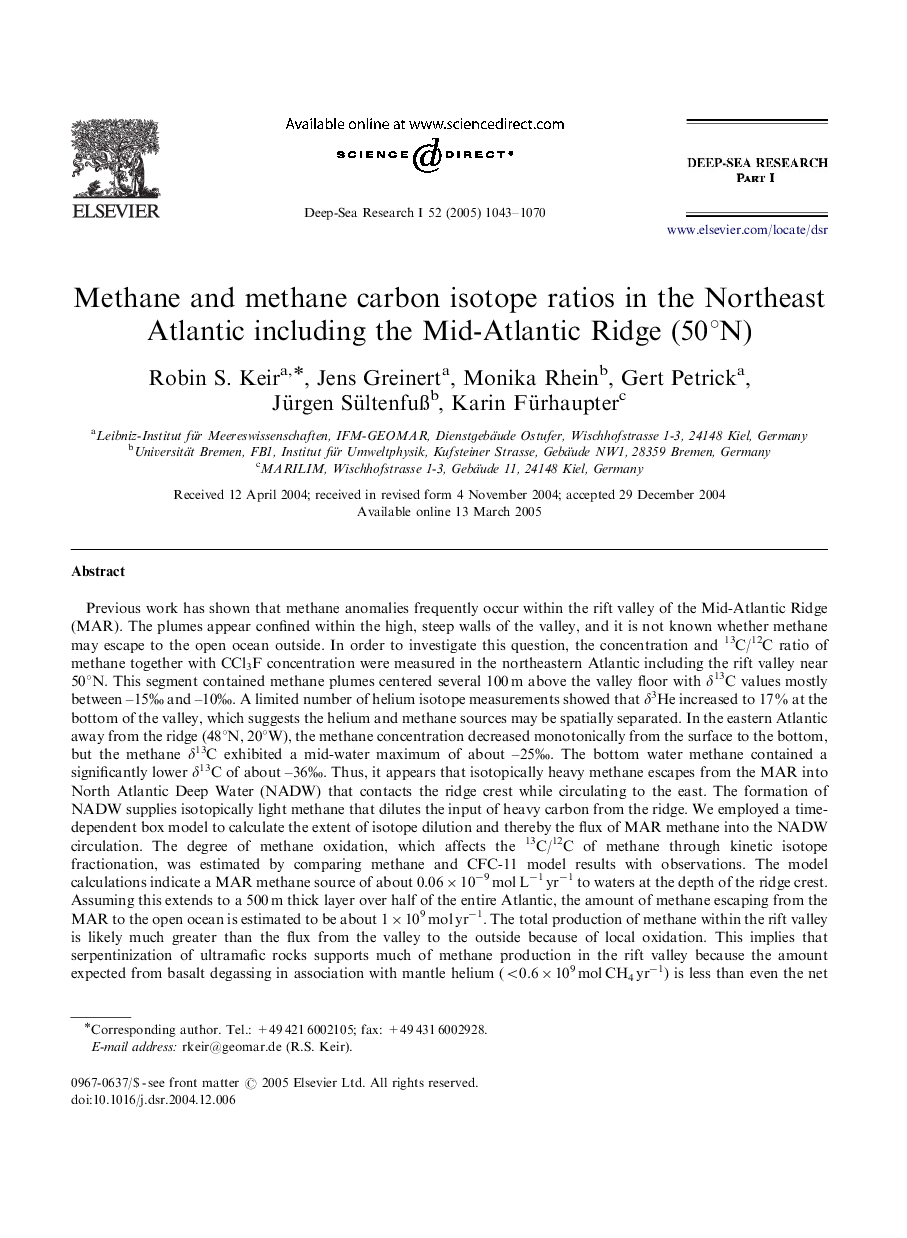| Article ID | Journal | Published Year | Pages | File Type |
|---|---|---|---|---|
| 9479681 | Deep Sea Research Part I: Oceanographic Research Papers | 2005 | 28 Pages |
Abstract
Previous work has shown that methane anomalies frequently occur within the rift valley of the Mid-Atlantic Ridge (MAR). The plumes appear confined within the high, steep walls of the valley, and it is not known whether methane may escape to the open ocean outside. In order to investigate this question, the concentration and 13C/12C ratio of methane together with CCl3F concentration were measured in the northeastern Atlantic including the rift valley near 50°N. This segment contained methane plumes centered several 100 m above the valley floor with δ13C values mostly between -15â° and -10â°. A limited number of helium isotope measurements showed that δ3He increased to 17% at the bottom of the valley, which suggests the helium and methane sources may be spatially separated. In the eastern Atlantic away from the ridge (48°N, 20°W), the methane concentration decreased monotonically from the surface to the bottom, but the methane δ13C exhibited a mid-water maximum of about -25â°. The bottom water methane contained a significantly lower δ13C of about -36â°. Thus, it appears that isotopically heavy methane escapes from the MAR into North Atlantic Deep Water (NADW) that contacts the ridge crest while circulating to the east. The formation of NADW supplies isotopically light methane that dilutes the input of heavy carbon from the ridge. We employed a time-dependent box model to calculate the extent of isotope dilution and thereby the flux of MAR methane into the NADW circulation. The degree of methane oxidation, which affects the 13C/12C of methane through kinetic isotope fractionation, was estimated by comparing methane and CFC-11 model results with observations. The model calculations indicate a MAR methane source of about 0.06Ã10â9 mol Lâ1 yrâ1 to waters at the depth of the ridge crest. Assuming this extends to a 500 m thick layer over half of the entire Atlantic, the amount of methane escaping from the MAR to the open ocean is estimated to be about 1Ã109 mol yrâ1. The total production of methane within the rift valley is likely much greater than the flux from the valley to the outside because of local oxidation. This implies that serpentinization of ultramafic rocks supports much of methane production in the rift valley because the amount expected from basalt degassing in association with mantle helium (<0.6Ã109 mol CH4 yrâ1) is less than even the net amount escaping from the valley. The model results also indicate the methane specific oxidation rate is about 0.05 yrâ1 in open waters of the northern Atlantic.
Keywords
Related Topics
Physical Sciences and Engineering
Earth and Planetary Sciences
Geology
Authors
Robin S. Keir, Jens Greinert, Monika Rhein, Gert Petrick, Jürgen SültenfuÃ, Karin Fürhaupter,
